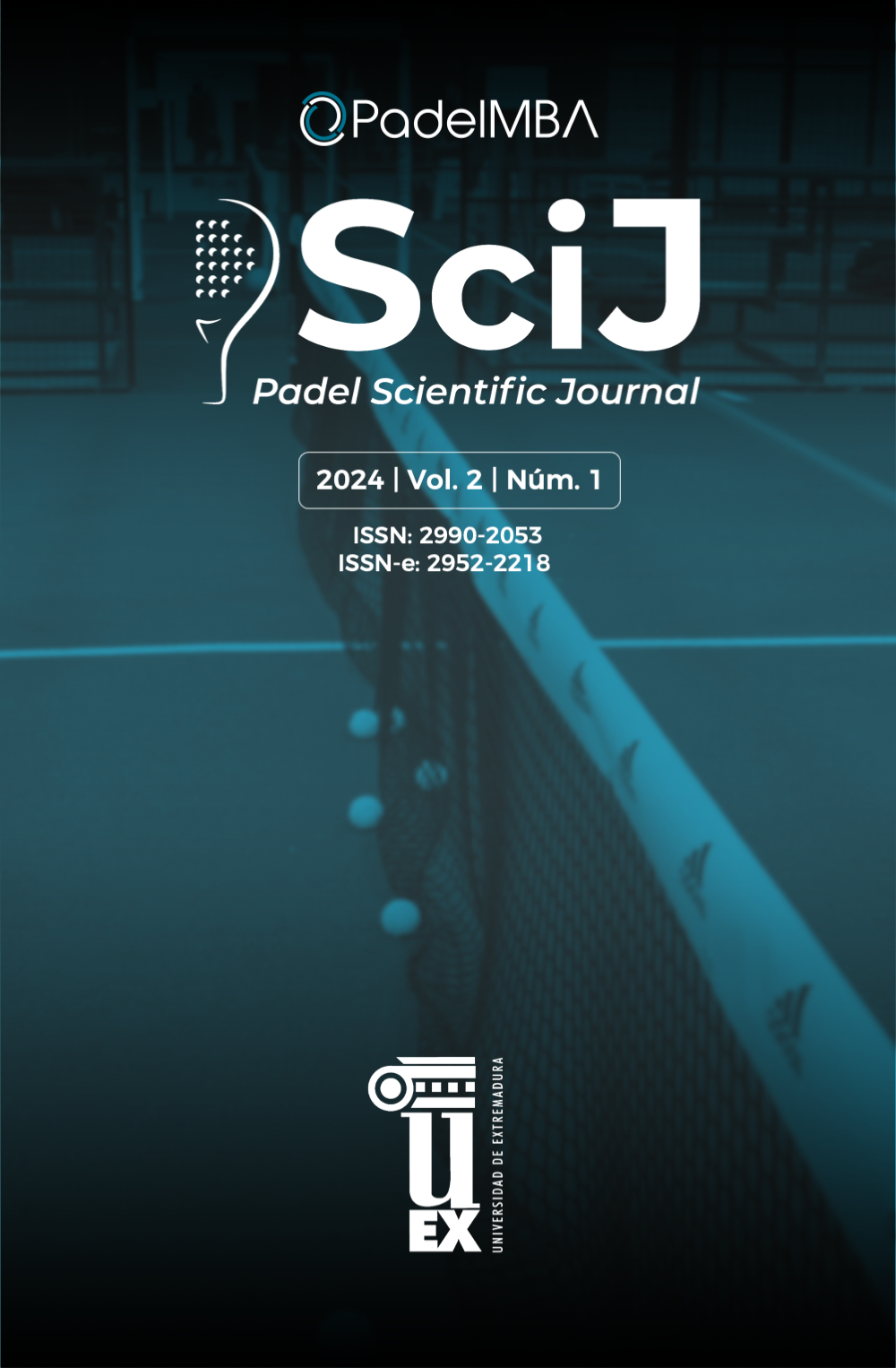Effects on strength, jumping, reaction time and perception of effort and stress in men´ s top-20 World Padel Competitions
DOI:
https://doi.org/10.17398/2952-2218.2.7Keywords:
padel, male, psychophysiology, competitive, top-20.Abstract
Paddle tenis has experienced significant growth in recent years, becoming one of the most popular and globally expanding sports. This study aims to examine the physiological performance and subjective perception of stress and fatigue in top-20 padel players during matches. Seven elite players participated in the study. Various variables were evaluated, such as subjective perception of effort and stress, isometric grip strength, reaction time, and jump performance, both before and after the matches. The results showed significant increases in subjective perception of effort, perceived stress, and performance in vertical countermovement and squat jumps, as well as in horizontal jumps after the matches. However, no significant changes were observed in reaction time, free-arm jumps, and grip strength (although significant differences were observed between the dominant and non-dominant hand). These findings suggest that the physical conditioning of high-level padel players allows them to endure the fatigue of matches. The differences between the dominant and non-dominant hand indicate asymmetries due to the one-sided nature of this sport. Reaction time did not decrease, suggesting that the level of fatigue was not sufficient to limit the information processing of these athletes. Perceived stress, with widely dispersed values far from the maximum, was consistent with the reaction and adaptation times of the players. The repeated decelerations and accelerations from the backcourt to the net (and vice versa) did not produce excessive fatigue but rather muscular activation, which was evident in horizontal jumps. These findings contribute to understanding the physiological aspects of padel and can be used for the development of training programs that optimize performance and minimize the perception of fatigue in players.
Downloads
Downloads
Published
Versions
- 2024-01-20 (2)
- 2024-01-20 (1)











